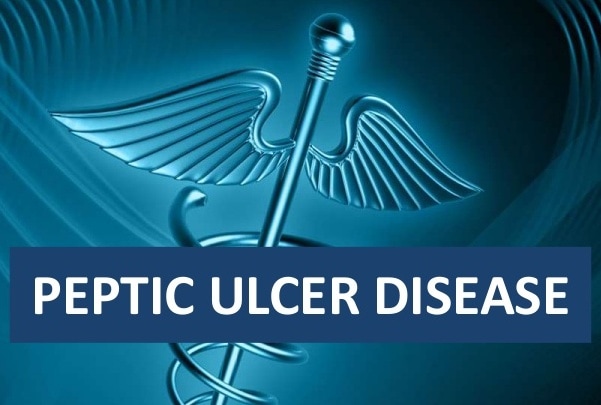Peptic ulcer disease (PUD)
Peptic ulcer disease (PUD), also known as a peptic ulcer or stomach ulcer, is a break in the lining of the stomach, first part of the small intestine, or occasionally the lower esophagus. An ulcer in the stomach is known as a gastric ulcer while that in the first part of the intestines is known as a duodenal ulcer.
CAUSES
- Emotional stress
- Foods (spices, pungent foods, etc)
- Overuse of certain drugs, especially NSAIDs (Non-steroidal anti-inflammatory drugs)
- Infections (H-Pylori)
- Hereditary
- Smoking
SYMPTOMS
Signs and symptoms of a peptic ulcer can include one or more of the following:
- abdominal pain, classically epigastricstrongly correlated to mealtimes. In case of duodenal ulcers the pain appears about three hours after taking a meal;
- bloatingand abdominal fullness;
- waterbrash(rush of saliva after an episode of regurgitation to dilute the acid in esophagus – although this is more associated with gastroesophageal reflux disease);
- nausea, and copious vomiting;
- loss of appetiteand weight loss;
- hematemesis(vomiting of blood); this can occur due to bleeding directly from a gastric ulcer, or from damage to the esophagus from severe/continuing vomiting.
- melena(tarry, foul-smelling feces due to presence of oxidized iron from hemoglobin);
- rarely, an ulcer can lead to a gastric or duodenal perforation, which leads to acute peritonitis, extreme, stabbing pain, and requires immediate surgery.
COMPLICATIONS
- Gastrointestinal bleedingis the most common complication. Sudden large bleeding can be life-threatening. It occurs when the ulcer erodes one of the blood vessels, such as the gastroduodenal artery.
- Perforation(a hole in the wall of the gastrointestinal tract) often leads to catastrophic consequences if left untreated. Erosion of the gastro-intestinal wall by the ulcer leads to spillage of stomach or intestinal content into the abdominal cavity. Perforation at the anterior surface of the stomach leads to acute peritonitis, initially chemical and later bacterial peritonitis. The first sign is often sudden intense abdominal pain; an example is Valentino’s syndrome, named after the silent-film actor who experienced this pain before his death. Posterior wall perforation leads to bleeding due to the involvement of gastroduodenal artery that lies posterior to the first part of the duodenum.
- Penetration is a form of perforation in which the hole leads to and the ulcer continues into adjacent organs such as the liverand pancreas.
- Gastric outlet obstructionis a narrowing of the pyloric canal by scarring and swelling of the gastric antrum and duodenum due to peptic ulcers. The person often presents with severe vomiting without bile.
- Cancer is included in the differential diagnosis (elucidated by biopsy), Helicobacter pylorias the etiological factor making it 3 to 6 times more likely to develop stomach cancer from the ulcer.
HOMOEOPATHIC TREATMENT
Homeopathy is the most scientific and comprehensive approach to the treatment of all kinds of illnesses.
Homeopathy assists the body’s natural healing process and brings about a relief which is quick, safe and very long-lasting.
Homoeopathic treatment helps in the gentle way to eliminate peptic ulcer disease.
Homeopathy helps in maintaining normal balance between mucosal protection/repair and aggressive factors in treatment for peptic ulcer disease.
Homeopathic treatment for peptic ulcer disease acts on the root cause of the disease which reduces the intensity and frequency of symptoms and relapses.

